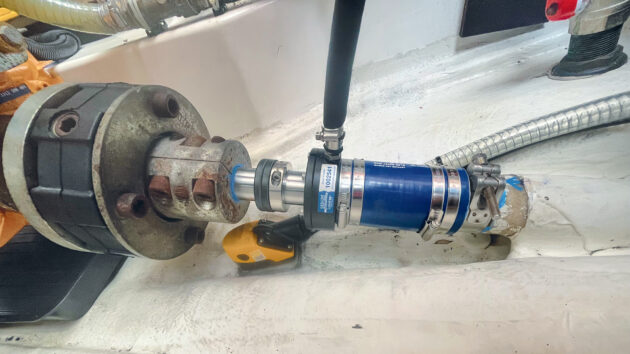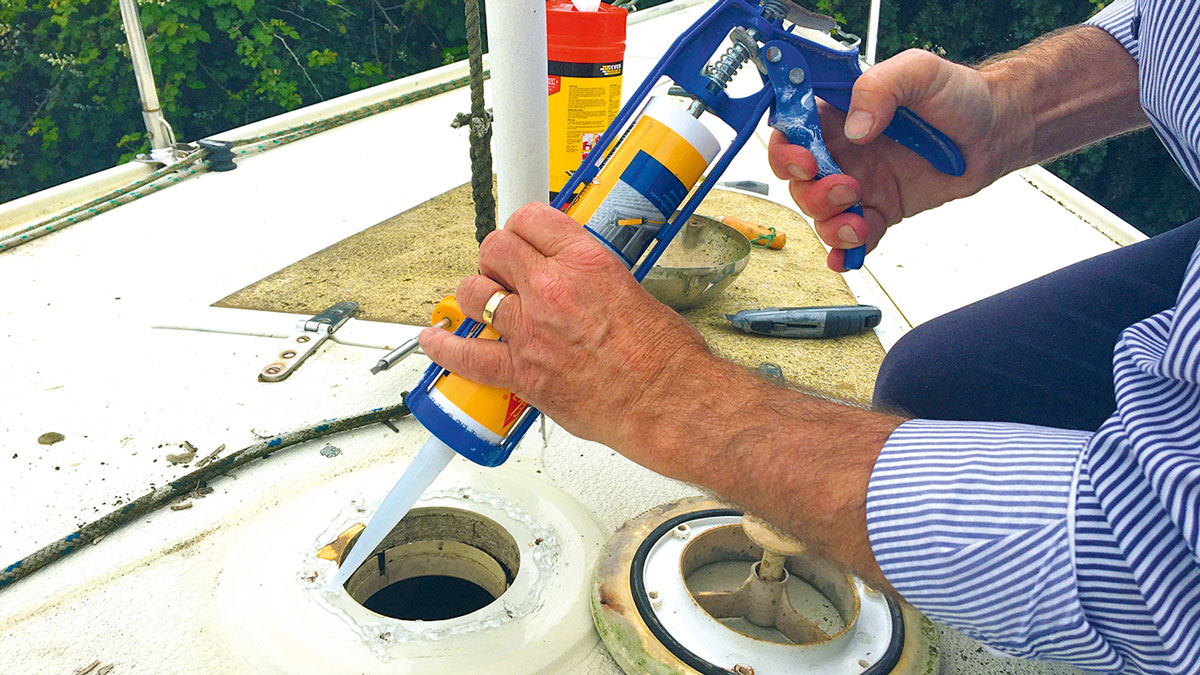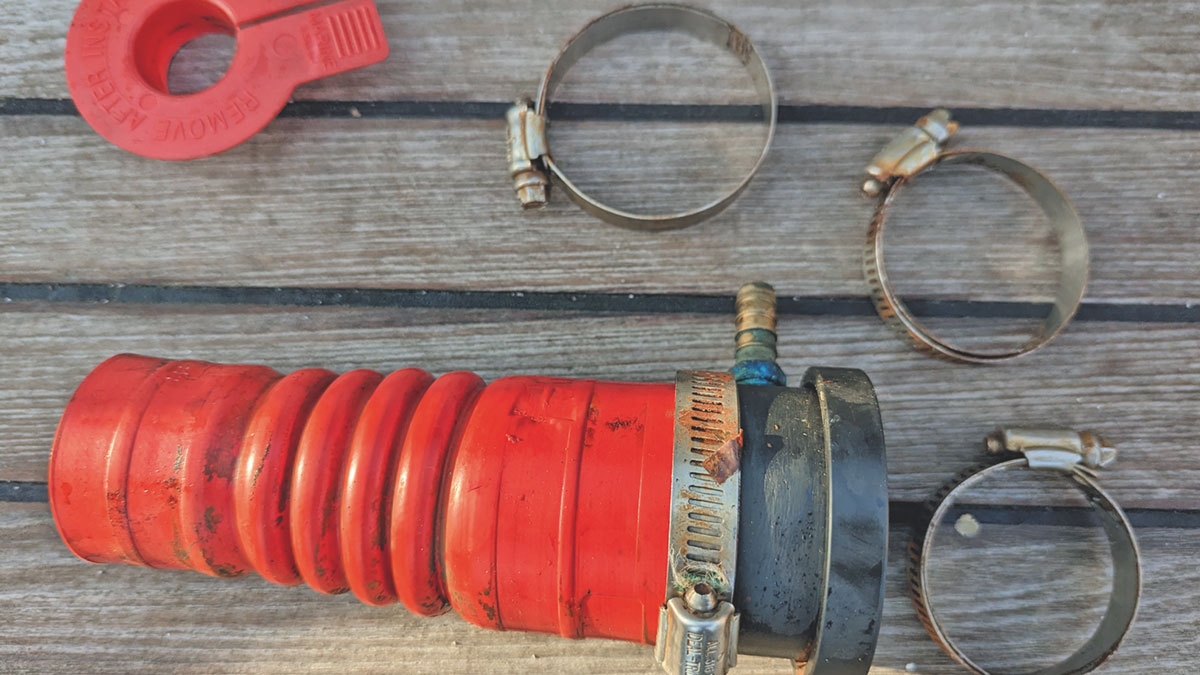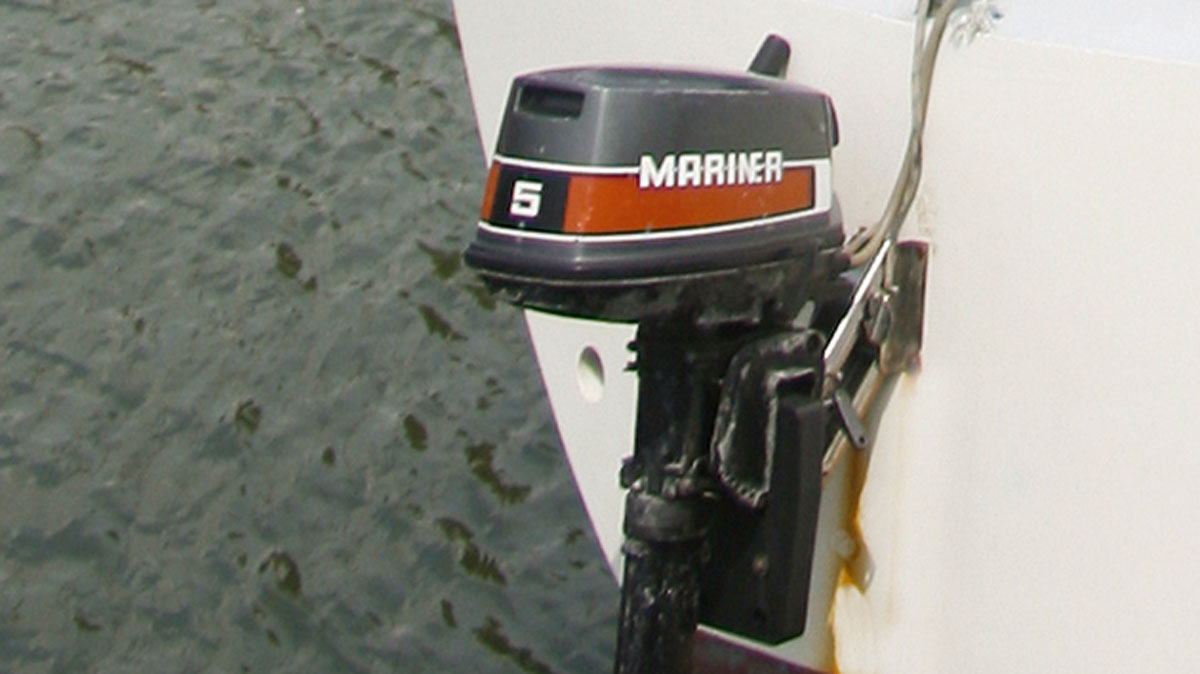Will Renilson replaces his Jersey 36 motor boat shaft seal before aligning the engine with the stern tube.
When we were having issues with our boat’s shaft seal, every marine engineer we talked to has said that you need to realign your engine with the stern tube when the boat goes back in the water after a period on the hard.
But how do you do this when your boat has a dripless seal?
It’s possible to drop the shaft back just aft of the thrust bearing to have enough room to align the engine gear box to the shaft at the thrust bearing.
Alas, with a dripless boat shaft seal, you also need to align the engine with the stern tube so that the dripless seal will not leak. You cannot do this once the stern tube is covered with either a bellows or the hose of the lip seal type of gland.
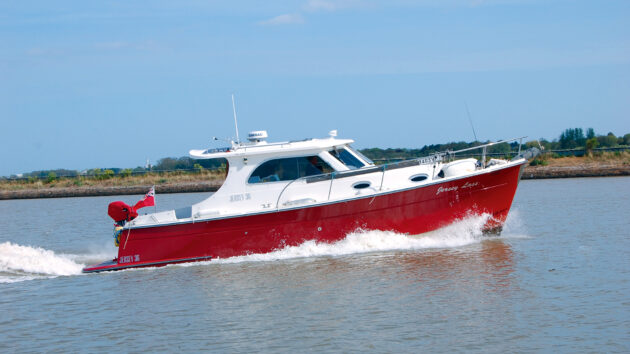
Will’s Jersey 36. Photo: Will Renilson.
The problem with my boat’s shaft seal
We had a Vetus lip seal which was originally installed at the factory with a lazy loop water feed from a skin valve. Seaweed blocked the inlet while entering Harwich, causing the lip seal to burn out and water ingress.
We replaced it with a PSS (Proprietary Shaft Seal) seal, as it contains no rubber to burn out and is kept lubricated by taking engine cooling water once the engine is finished with it. We also installed a secondary inlet and weed filter for the main engine salt water cooling system, so we can switch between the two if a blockage occurs.
Due to the engine movement forward and aft on our shaft drive engine, we had to install the upgraded silicone PSS seal and over-compress the bellows to gain a seal. This was recommended by the PSS technical team, but was not ideal as it was very difficult to ‘burp’ the seal when needed, but it did work for three years.
This year, on a trip to London, we noticed a black carbon line coming from the stern gland, though no water ingress. It was not until we were able to get the boat out of the water that we found out what had been happening.
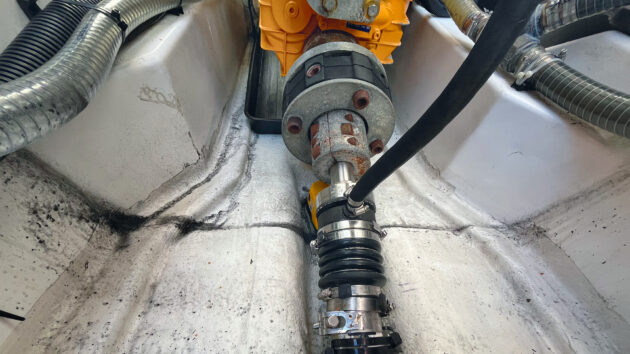
Carbon began coming into the boat via the stern gland. Photo: Will Renilson.
Unknown to us, one of the engine mounts had snapped and the engine had gone out of alignment with the stern tube, though to the naked eye, she was still running sweetly with no vibrations or other signs.
The cure
- Replace all engine mounts with Vetus recommended mounts; their technicians recommend changing the mounts after six years or 1,000 hours.
- Take the lubrication water from the main engine raw water cooling once the engine has finished with it, and also install a secondary main engine cooling water skin valve/weed filter for the main engine.
- Paint around every engine mount to mark its position and paint a line down each nut so we can see if it starts to move
- Take and record the heights at each engine mount position. We are hoping that with these markings and measurements, we can see quickly if the engine starts to move, giving us a chance to reposition it without needing to lift out of the water.
- Install a camera pointing at the stern gland so we can quickly monitor this area without opening any hatches. It is amazing how reassuring this wee camera has proved to be!
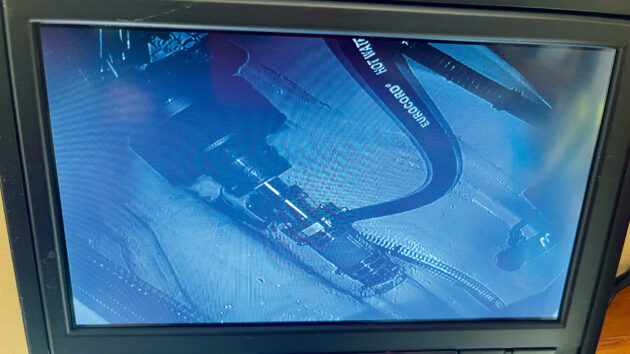
To provide reassurance, Will installed a camera so any stern gland issue can be quickly identified. Photo: Will Renilson.
Pumps and boat shaft seals
Install the head of a bellows type of bilge pump directly under the stern gland so that this area can be pumped out if there is a leak, before the water gets above the spinning shaft. From experience when this happens, water sprays everywhere, causing annoying problems with electrics.
Ordinary bilge pumps cannot be run dry as the impeller would burn out, but the bellows type can be used like a wet hoover when the head is not fully covered with water. This was important for us as we have such little space under the shaft.
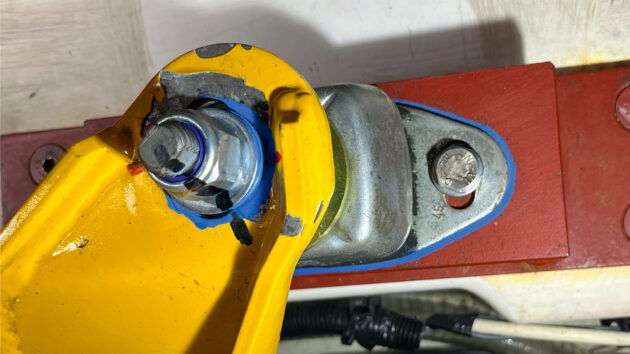
Each engine mount and nuts were marked and vertical measurements taken and logged. Photo: Will Renilson.
Change the stern gland to a Lasdrop DrySeal and store two spare boat shaft seals further up the shaft. We favoured the Lasdrop over Tidesmarine, Volvo, Black Jack or Vetus, as it has both a cooling inlet and a central location cutless bearing type inside, which will help with the alignment. There is not enough room under the shaft to fit a traditional style stuffing box type of gland, and there is too much engine movement for a PSS type of gland.
The only problem left was how to align a dripless seal once in the water.
You can drop the shaft back while in the water and not cause water ingress, so you could technically align the engine gear box to the shaft, but you cannot align the shaft with the stern tube, as this is covered with the hose of the stern gland.
You also have to be very careful when moving the engine alignment port and starboard, as it is easy to go too far when using levers; changing the height of the mounts is far more controlled.
We did try to take clock measurements from the thrust bearing to supporting beams while in the water, but found this was not accurate enough when we checked the position relative to the stern tube once out of the water.
A local marine engineer said that our idea of marking the engine mounts was the best solution, and we need to make sure that the alignment is correct out of the water, then leave it alone.
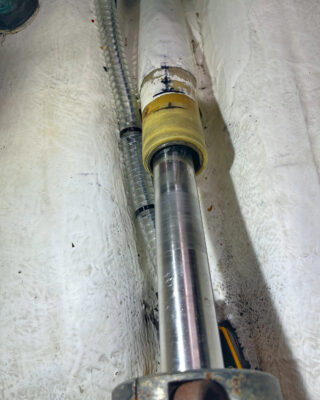
The shaft is clearly out of alignment with the stern tube. Photo: Will Renilson.
Expert view from PBO’s engine expert Stu Davies
The term ‘dripless seals’ covers a multitude of different boat shaft seals with a common factor – unlike old-fashioned packing glands, they don’t drip!
There are two types: a stainless steel (usually) ring is fixed to the prop shaft, and this is forced by a spring against a carbon fixed ring; or it can be a flexible ‘rubber bullet’ Volvo-type seal, with twin rubber internal lip seals integral with a cutless-type shaft bearing.
I don’t like the mating ring types – they’re too complicated and require exact shaft alignment. The spring has to be set up to push the mating surfaces of the sealing faces together at the right compression to accommodate shaft movement. Only a few grains of sand between the machined faces can cause sealing problems.
The Volvo-type, ‘rubber bullet’ seals are a different animal. These are tolerant of both misalignment and the movement of the shaft in and out. They also last for years as long as they’re maintained as per the manufacturer’s instructions.
Different manufacturers use different means of getting lubrication/cooling water to them.
My Beneteau has an 8mm clear pipe from a through-hull fitting to feed it. Some boatbuilders, however, use water from the exhaust.
A quick burp before a trip by squeezing the end of the seal, and a squirt of Volvo Water Resistant Stern Grease to the lip seal area (I use a straw for this) will ensure they last for years.
To the points raised in Will’s article, I find it difficult to understand how the lip seal initially burnt out, as the seals are lubed from both sides so a blockage of one doesn’t stop the entrance of water into the stern tube, as evidenced by his description of the aftermath.
In reference to his issue with the alignment of the prop shaft to the engine, the Volvo Penta seal is aligned with the shaft by the integral cutless bearing. Aligning the shaft to the engine aligns the seal.
I’ve aligned my shaft to the engine on the hard every time and haven’t suffered any misalignment once in the water, but I know that some people recommend realignment in the water as well, due to hull flexing.
Best marine sealants and adhesives for boat jobs
With help from adhesive and sealant expert Laurie Brebner, PBO’s Ali Wood explains which works best for different jobs on…
Boat shaft seal replacement: expert tips
Getting to grips with replacing a stern shaft seal on a Contessa 32, Ben Lowings explains how it can be…
Replacing gearbox oil seals: step-by-step
Outboard engine gearbox oil seals are vulnerable to damage and can be difficult to remove. Rupert Holmes explains how to…
Want to read more articles like boat shaft seal repair story?

A subscription to Practical Boat Owner magazine costs around 40% less than the cover price.
Print and digital editions are available through Magazines Direct – where you can also find the latest deals.
PBO is packed with information to help you get the most from boat ownership – whether sail or power.
-
-
-
- Take your DIY skills to the next level with trusted advice on boat maintenance and repairs
- Impartial, in-depth gear reviews
- Practical cruising tips for making the most of your time afloat
-
-
Follow us on Facebook, Instagram, TikTok and Twitter




